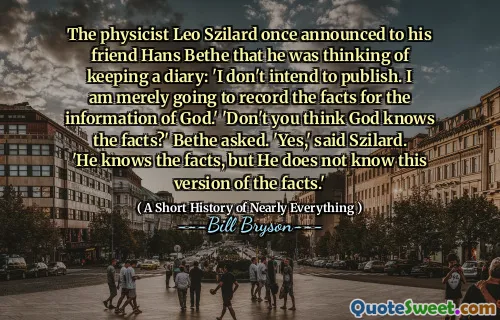It is natural but wrong to visualize the singularity as a kind of pregnant dot hanging in a dark, boundless void. But there is no space, no darkness. The singularity has no "around" around it. There is no space for it to occupy, no place for it to be. We can't even ask how long it has been there-whether it has just lately popped into being, like a good idea, or whether it has been there forever, quietly awaiting the right moment. Time doesn't exist. There is no past for it to emerge from. And
In his book "A Short History of Nearly Everything," Bill Bryson discusses the concept of a singularity, emphasizing that it should not be imagined as a solitary point in an expansive void. The singularity exists beyond our conventional understanding of space and time; it does not occupy a location and lacks an external context to define its existence. This challenges our usual ways of thinking about the universe and its structure.
Moreover, Bryson asserts that asking about the duration of the singularity's existence is meaningless because time itself does not apply to it. There is no "before" or "after" that we can attribute to the singularity, making it a perplexing aspect of cosmology. This perspective invites readers to rethink fundamental concepts like space and time when contemplating the origins of the universe.






